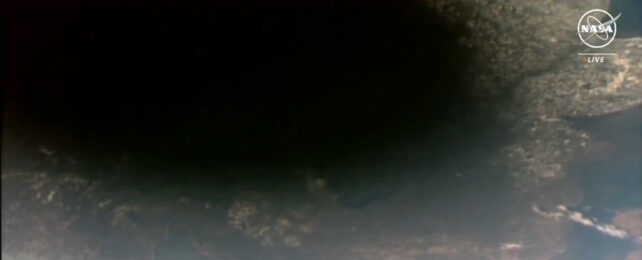As millions across North America flocked to fill every hotel, motel, and AirBnB along a thin strip of land stretching from Mexico to Canada's eastern seaboard, a handful of humans were privileged enough to watch the 2024 total eclipse from what has to be the best seat in the house – the International Space Station.
Video footage shared by astronauts roughly 400 kilometers (250 miles) overhead provides a unique perspective on today's event, one that had zero chance of being interrupted by pesky clouds.
For those on the ground, the darkness caused by the Moon in front of the Sun lasted about as long as your average Top 40 rock ballad.
Watching from high above, those on the orbiting space station could sit back a little longer and appreciate the full majesty of the Moon's shadow sweep across the planet's surface.
Ever seen a total solar #eclipse from space?
— NASA (@NASA) April 8, 2024
Here is our astronauts' view from the @Space_Station pic.twitter.com/2VrZ3Y1Fqz
While the ISS might have avoided the risky commute below, there was nothing incidental about the station's front row position. NASA has been gearing up for the moment for months, slowly tweaking the station's path to put it right where the action is on April 8.
Want an even better view? The National Oceanic and Atmospheric Administration has put together a blink-and-you'll-miss-it animation of the entire event compiled from images taken by one of their geostationary weather satellites.
1:53pmEDT update: moon still moving in front of the Sun. #Eclipse2024 https://t.co/C5djEsyYs8 https://t.co/uC8NPkGEVX pic.twitter.com/kXQOnnC6f3
— National Weather Service (@NWS) April 8, 2024
For those in the contiguous US, there won't be another spectacle like it for another 20 years. But anybody who happens to be in Greenland, Iceland, Spain, Russia, or Portugal in 2026, there's a total eclipse in the pipeline you won't want to miss.
The space station is set for retirement around 2030, but with NASA building up to put a permanent base on the lunar surface, it's not out of the question that we might be bringing you snaps of the Moon's shadow passing over Montana in 2044 taken from the perspective of a lunar explorer.
